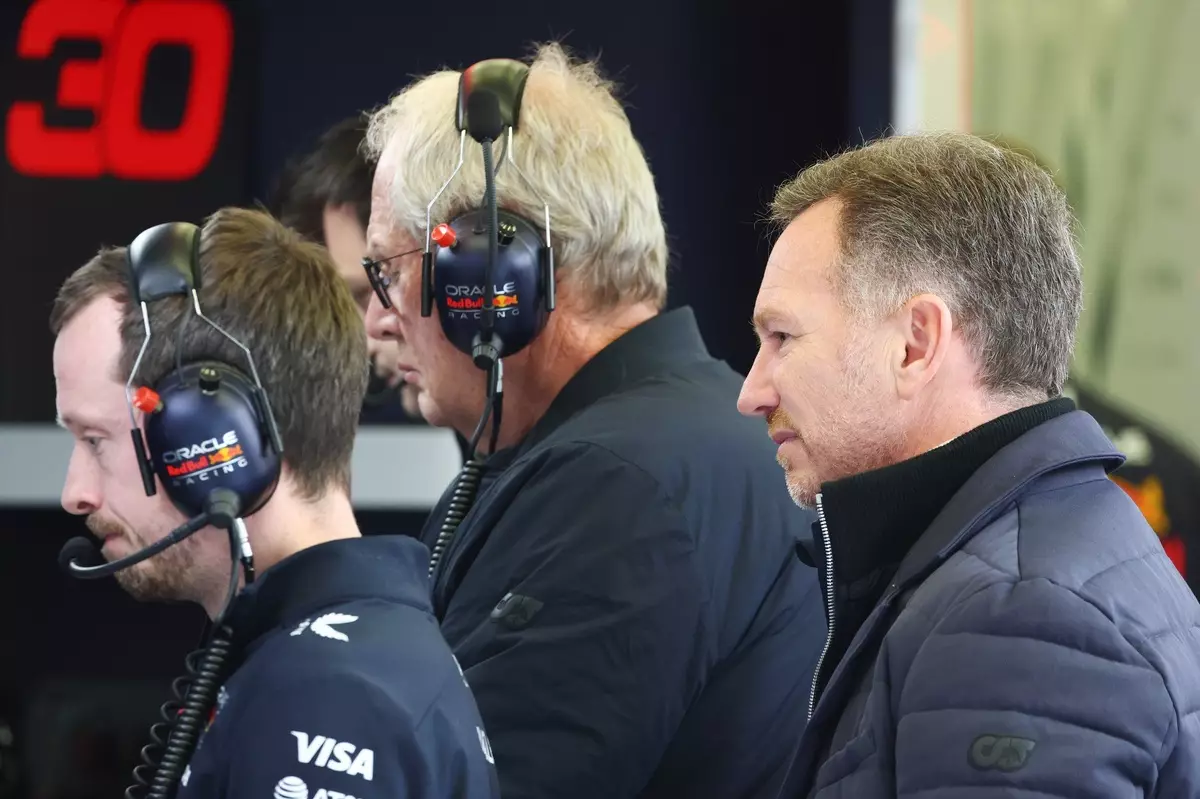In the high-stakes world of Formula 1 racing, where milliseconds determine the difference between glory and defeat, Red Bull Racing finds itself grappling with a bewildering quandary. As Christian Horner, the team’s principal, expressed, it feels as though they are “looking at two different watches.” This analogy perfectly encapsulates the ongoing struggle between simulated performance in the wind tunnel and the harsher realities of the racetrack. Despite Max Verstappen’s recent victory at the Japanese Grand Prix, it is evident that the team’s previous dominance has waned, particularly following a lackluster performance at the Bahrain Grand Prix. The 2025 season is turning into a crucible for Red Bull, where the combination of technical challenges and regulatory constraints is putting their legacy to the test.
The Role of Data Correlation
At the heart of Red Bull’s current predicament lies a troubling disconnect between theoretical insights derived from wind tunnel testing and the practical feedback received from track performance. Horner’s reflections reveal a deeper truth: the team’s inability to harmonize data from their sophisticated tools with the tangible results they witness during races. While the nuances of aerodynamics can often be obscured through vehicle setup, the Bahrain Grand Prix exposed fundamental flaws that require immediate rectification.
Horner’s assertion about the team’s understanding of its issues is a hopeful sign. Yet, it begs the question: can Red Bull effectively translate that understanding into actionable solutions? Achieving the desired performance relies heavily on identifying and addressing these discrepancies. For a team that has achieved remarkable success, the current phase feels almost paradoxical, suggesting that years of technological advancement may have led them to a point of stagnation instead of innovation.
Challenges of the Current Regulatory Framework
With the current regulatory framework set to conclude at the end of 2025, Red Bull’s situation is further complicated by the absence of significant regulations changes during the last off-season. Rivals like Haas and Mercedes have managed to find ways to enhance their cars, making it all the more painful to witness Red Bull’s regression. Horner’s acknowledgment that they are grappling with similar issues from the previous season strikes a somber chord, particularly as the competitive landscape continues to evolve.
Notably, the challenges Red Bull faces are exacerbated by the marginal gains that can typically be secured towards the end of a cycle of regulations. With increased scrutiny and a wealth of data now accumulating from various races, Red Bull must adapt more quickly in a landscape where rivals may be pulling ahead. The team’s hopes for improvement rest on leveraging this data to refine their understanding of the vehicle’s behavior on-track—a task that requires not just time, but also a willingness to lean into creative problem-solving.
Pushing for Speed Through Technical Revisions
Of particular concern for Verstappen is the vehicle’s “entry phase into the mid-corner.” This is an area that demands not only driver skill but intrinsic vehicle capability for grip and handling. As Horner points out, these are fundamentally aerodynamic issues that can—if resolved—reinvigorate the racing experience by instilling confidence in the driver as they navigate tight corners at high speed.
The challenge solidifies the notion that Red Bull is at a crossroads; the current technology is outdated in the face of rapidly changing demands of aerodynamics and speed. This speaks to the broader issue of how F1 teams must evolve within the constraints of established regulations. While Red Bull awaits the introduction of a new wind tunnel facility slated for 2027, the hope is that innovative thinking can still glean improvements from the existing setups.
Looking to the Future with Optimism
Despite the struggles, there is an underlying current of optimism at Red Bull Racing. The recognition of problems is the first step toward resolution. While the clock continues to tick down towards significant regulatory changes in the near future, the potential for enhanced performance lies with harvesting the insights gained from ongoing races. Horner’s steadfast confidence in his technical team’s ability to unpick these intricate issues is reassuring, yet it underscores the urgency of seizing this moment to recalibrate.
Ultimately, the art of racing in Formula 1 transcends mere engineering prowess; it encompasses a philosophy of relentless improvement and adaptation. As Red Bull Racing navigates these turbulent waters, they must remain vigilant, leveraging every ounce of data and insight to reclaim their position at the forefront of motorsport innovation. With the right alignment of technology, strategy, and human skill, the horizon may yet shine brightly for Red Bull, despite the metaphorical watches giving conflicting times.


Leave a Reply